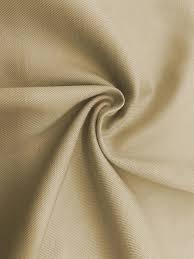Plywood is a versatile material that has gained immense popularity in woodworking and furniture design due to its strength, durability, and aesthetic appeal. One of the most exciting aspects of working with plywood is the ability to bend it into various shapes, allowing for innovative designs that can elevate any project. In this article, we will explore the techniques and methods for bending plywood into shape, providing you with practical insights and expert tips to achieve stunning results.
Understanding Plywood and Its Properties
Before diving into the bending techniques, it is essential to understand the properties of plywood. Plywood is made from thin layers of wood veneer glued together, with the grain of each layer oriented in different directions. This cross-lamination provides plywood with its strength and flexibility, making it an ideal candidate for bending. The thickness, type of wood, and the number of layers can all influence how well plywood can be bent.
Techniques for Bending Plywood
There are several methods to bend plywood, each with its own advantages and applications. Here, we will discuss the most common techniques:
- Steam Bending
Steam bending is a traditional method that involves softening the wood fibers with steam, allowing the plywood to be bent into shape. This technique is particularly effective for creating gentle curves and is commonly used in furniture making.
Steps for Steam Bending:
- Preparation: Cut the plywood to the desired dimensions, ensuring it is slightly larger than the final shape.
- Steam Chamber: Create a steam chamber using a PVC pipe or a dedicated steam box. The plywood should be placed inside the chamber for 30 minutes to an hour, depending on its thickness.
- Bending Form: Prepare a bending form that matches the desired curve. This can be made from solid wood or MDF.
- Bending Process: Carefully remove the plywood from the steam chamber and immediately place it onto the bending form. Use clamps to hold it in place until it cools and dries, usually 24 to 48 hours.
- Kerf Bending
Kerf bending involves making a series of cuts (kerfs) along the plywood to allow it to bend more easily. This method is ideal for creating tighter curves and is often used in architectural applications.
Steps for Kerf Bending:
- Marking the Cuts: Determine the radius of the curve and mark the kerf lines on the plywood. The spacing of the cuts will depend on the desired flexibility.
- Cutting the Kerfs: Use a table saw or a jigsaw to make shallow cuts along the marked lines, ensuring not to cut all the way through the plywood.
- Bending the Plywood: Gently bend the plywood along the kerfs, using clamps to secure it to a form or frame. The kerfs will allow the plywood to flex without breaking.
- Lamination
Lamination involves gluing multiple layers of thin plywood together to create a thicker, curved piece. This method is particularly effective for achieving complex shapes and is commonly used in boat building and custom furniture.
Steps for Lamination:
- Thin Sheets: Cut the plywood into thin sheets, typically 1/8 inch thick.
- Glue Application: Apply a strong adhesive, such as epoxy or polyurethane glue, between each layer.
- Forming the Curve: Stack the glued sheets onto a bending form, applying pressure with clamps to ensure a tight bond.
- Curing: Allow the laminated plywood to cure for the recommended time, usually 24 hours, before removing it from the form.
Tips for Successful Plywood Bending
- Choose the Right Plywood: Select high-quality plywood with a suitable grain pattern. Birch and maple are excellent choices due to their flexibility and strength.
- Experiment with Thickness: Thinner plywood bends more easily, while thicker sheets may require more advanced techniques like lamination.
- Practice Safety: Always wear protective gear when working with power tools and adhesives. Ensure proper ventilation when using steam or chemicals.
- Test Before Committing: If you're unsure about a specific technique, conduct a small test with scrap plywood to refine your approach.
Conclusion
Bending plywood into shape opens up a world of creative possibilities for woodworkers and designers alike. By mastering techniques such as steam bending, kerf bending, and lamination, you can create stunning curved designs that enhance the beauty and functionality of your projects. With practice and patience, you will be able to transform simple sheets of plywood into intricate forms that showcase your craftsmanship and innovation. Whether you're building furniture, architectural elements, or artistic installations, the ability to bend plywood is a valuable skill that will elevate your woodworking repertoire.

Average Rating